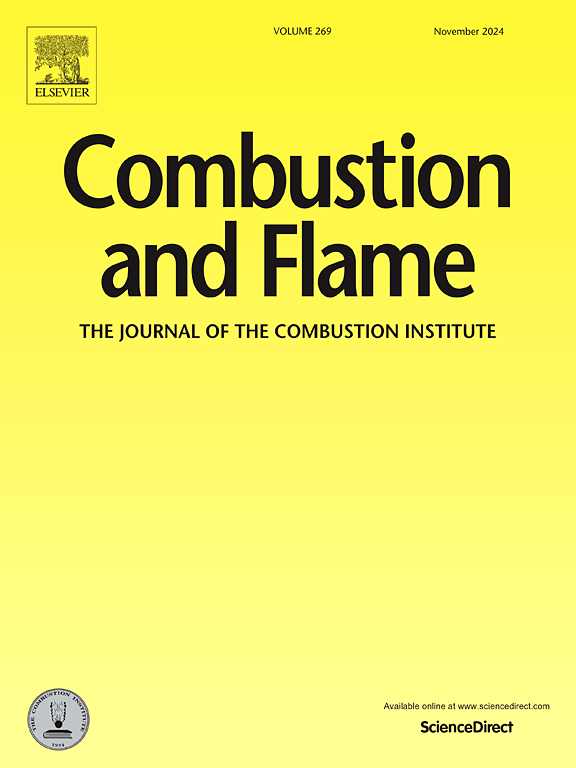Plasma assisted NH3/H2/air ignition in nanosecond discharges with non-equilibrium energy transfer
IF 5.8
2区 工程技术
Q2 ENERGY & FUELS
引用次数: 0
Abstract
Ammonia (NH3), with its high energy density and easiness to store and transport as a hydrogen carrier, has become a promising alternative green fuel. However, its adoption in power generation is hindered by challenges such as low burning velocity, slow low-temperature oxidation, high NOx emissions, and ignition difficulty. This work computationally investigates the effects of non-equilibrium energy transfer by nanosecond discharges on NH3 ignition and flame propagation in an NH3/H2/air flow at 700 K and 1 atm. The simulation results demonstrate that NH3/air mixtures require a large ignition energy due to their large critical ignition radius. It is shown that adding 30 % hydrogen significantly reduces the critical ignition radius and minimum ignition energy. Two-dimensional modeling further shows a non-monotonic dependence of ignition kernel volume on the applied voltage and reduced electric field. The optimum ignition enhancement occurs at 200 Td where the generation of electronically excited species and radicals including N2(B), O(1D) and OH becomes most efficient. Higher voltages divert electron energy toward ionization, which makes it less effective for NH3 ignition. The study also identifies an optimal electrode gap size for a given pulse energy. Smaller gap sizes increase deposited energy density, raising temperature and radical concentrations. However, excessive reduction of the gap distance reduces flame propagation speed due to the flame stretch effect in rich mixtures with the effective Lewis number greater than unity. A nonlinear relationship between pulse repetition frequency and ignition kernel volume is observed in a nanosecond pulsed high frequency discharge (NPHFD). An optimal frequency range of 200 kHz to 2 MHz is found when two pulses are used. In addition, an optimal number of pulses exists for each pulse repetition frequency, with higher frequencies requiring more pulses to maximize the overlap region. These findings provide critical insights on developing controlled plasma discharge techniques for efficient NH3 ignition in reactive flows within internal combustion engines and gas turbines.
求助全文
约1分钟内获得全文
求助全文
来源期刊

Combustion and Flame
工程技术-工程:化工
CiteScore
9.50
自引率
20.50%
发文量
631
审稿时长
3.8 months
期刊介绍:
The mission of the journal is to publish high quality work from experimental, theoretical, and computational investigations on the fundamentals of combustion phenomena and closely allied matters. While submissions in all pertinent areas are welcomed, past and recent focus of the journal has been on:
Development and validation of reaction kinetics, reduction of reaction mechanisms and modeling of combustion systems, including:
Conventional, alternative and surrogate fuels;
Pollutants;
Particulate and aerosol formation and abatement;
Heterogeneous processes.
Experimental, theoretical, and computational studies of laminar and turbulent combustion phenomena, including:
Premixed and non-premixed flames;
Ignition and extinction phenomena;
Flame propagation;
Flame structure;
Instabilities and swirl;
Flame spread;
Multi-phase reactants.
Advances in diagnostic and computational methods in combustion, including:
Measurement and simulation of scalar and vector properties;
Novel techniques;
State-of-the art applications.
Fundamental investigations of combustion technologies and systems, including:
Internal combustion engines;
Gas turbines;
Small- and large-scale stationary combustion and power generation;
Catalytic combustion;
Combustion synthesis;
Combustion under extreme conditions;
New concepts.
 求助内容:
求助内容: 应助结果提醒方式:
应助结果提醒方式:


